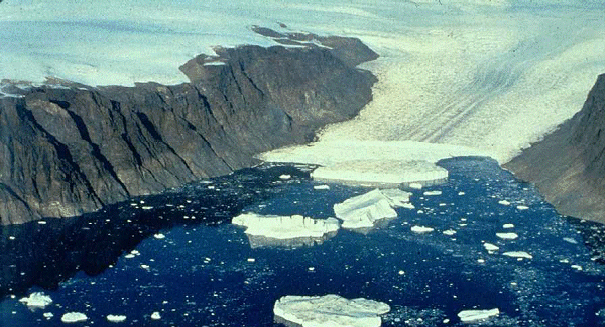
New study shows just how easily glacial erosion can be affected by slight changes in surrounding climate
Ice – get it warmer, and it melts faster. That’s not news. Even glaciers, the undisputed heavyweight champions of the ice world, aren’t immune to the laws of thermodynamics. However, a new study reveals just how sensitive glaciers can be to changes in the surrounding climate. In observing the Pine Island Glacier in West Antarctica, scientists found that its thinning (which had been happening at a steady rate for decades) decreased by 50% between 2010 and 2012.
Researchers believe the slowdown is the result of a La Ninã weather event. As a glacier “flows,” or slides into the sea, it creates what’s called an oceanic ice shelf as it makes contact with the water. In prior decades, that ice shelf melted at a rate such that the glacier’s flow accelerated, in turn contributing to the thinning of the glacier itself. Understanding the processes driving ice shelf thinning and the glacier’s response is key to assessing how much it will contribute to rising sea levels as temperatures continue to rise globally.
It’s now known that much of the thinning is due to a deep oceanic inflow of Circumpolar Deep Water (CDW) on the continental shelf neighboring the glacier. This warmer water then makes its way into a cavity beneath the ice shelf melting it from below, effectively hollowing out from underneath.
The dramatic cooling of the surrounding ocean observed in January 2012 is believed to be due to an increase in easterly winds caused by a strong La Ninã event in the tropical Pacific Ocean. Typically, those winds blow in from the west.
Dr Pierre Dutrieux, from British Antarctic Survey (BAS) said: “We found ocean melting of the glacier was the lowest ever recorded, and less than half of that observed in 2010. This enormous, and unexpected, variability contradicts the widespread view that a simple and steady ocean warming in the region is eroding the West Antarctic Ice Sheet. These results demonstrate that the sea-level contribution of the ice sheet is influenced by climatic variability over a wide range of time scales.”
In 2009, a higher CDW volume and temperature in Pine Island Bay contributed to an increase in ice shelf melting compared to the last time measurements were taken in 1994. But observations made in January 2012 show that the top of the thermocline (the layer separating cold surface water and warm deep waters) was found to be about 250 metres deeper compared with any other year for which measurements exist.
Professor Adrian Jenkins, also from BAS, added: “It is not so much the ocean variability, which is modest by comparison with many parts of the ocean, but the extreme sensitivity of the ice shelf to such modest changes in ocean properties that took us by surprise. That sensitivity is a result of a submarine ridge beneath the ice shelf that was only discovered in 2009 when an Autonomous Underwater Vehicle mapped the seabed beneath the ice. These new insights suggest that the recent history of ice shelf melting and thinning has been much more variable than hitherto suspected and susceptible to climate variability driven from the tropics.”
Ice: Even on a large scale, it’s sensitive stuff.
Leave a Reply